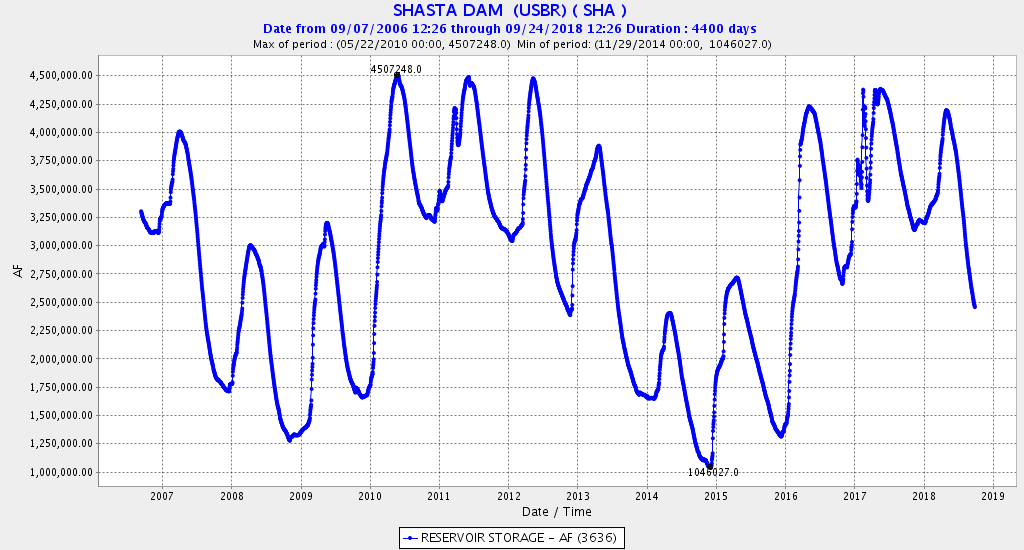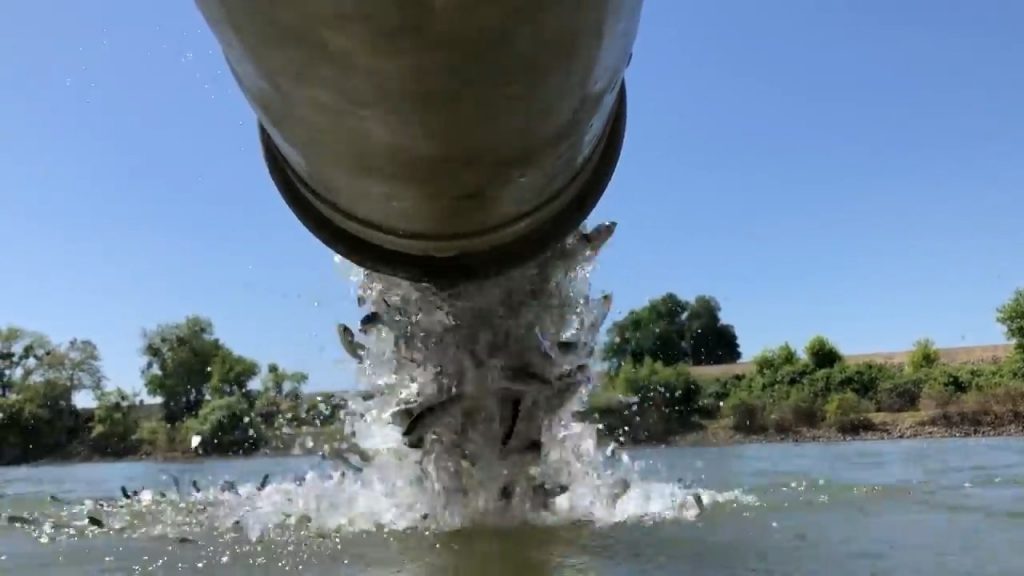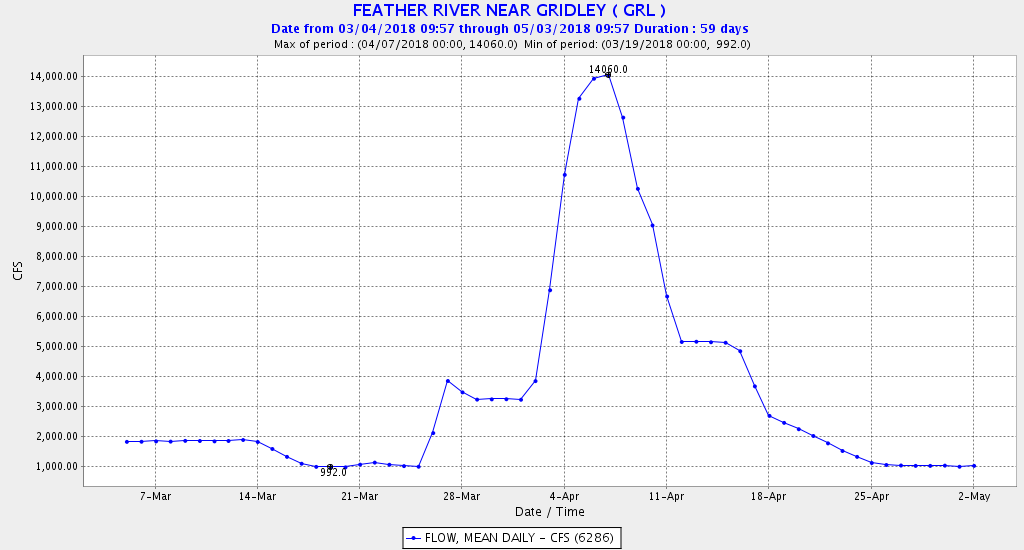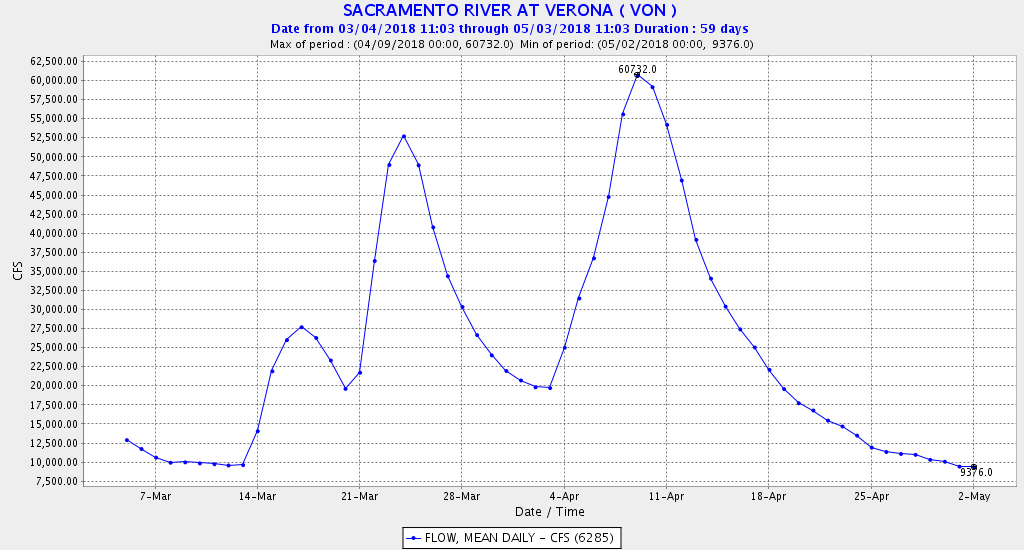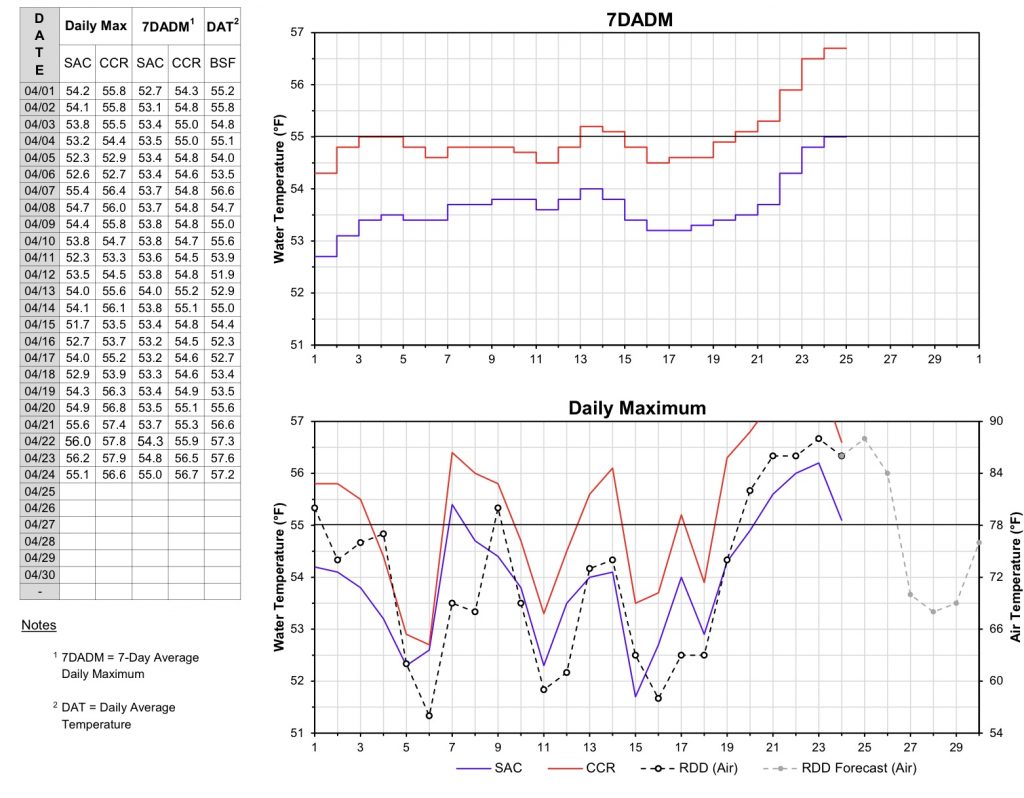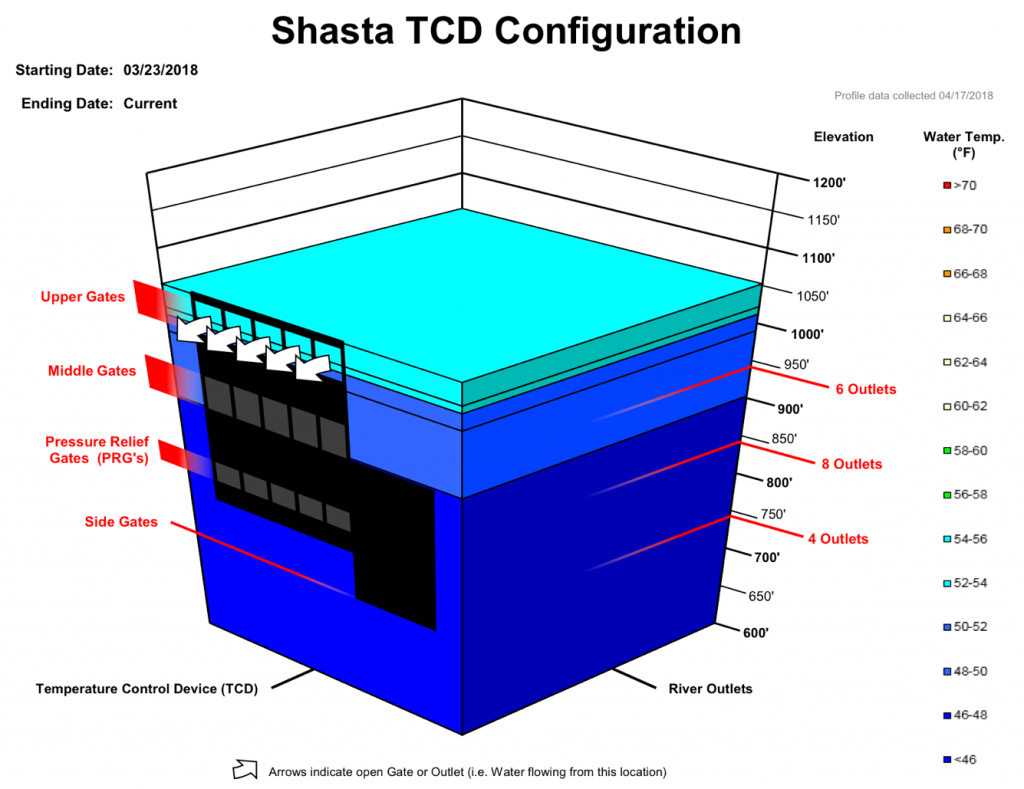In a December 2018 post, I discussed the need for fall pulsed flows in the Sacramento River through the Delta in dry years. In this post, I further discuss the need for winter pulsed flows, using brood years 2013-2015 and resulting rearing of winter-run salmon in drought years 2014 and 2015 and normal year 2016 as examples.
Winter-Run brood year 2013 (spawned in summer 2013) started with a good number of spawners (Figure 1), but resulted in poor escapement in 2016 (Figures 1 and 2). Likewise, brood year 2014 started with slightly fewer spawners and resulted in even lower escapement in 2017. Brood year 2015 fared better.
While the lack of fall pulse flows and poor spawning conditions and redd dewatering likely struck brood years 2013 and 2014 first, the lack of winter pulsed flows further limited their survival, or at a minimum failed to ameliorate poor fall survival. Brood year 2013 juveniles moved out of the spawning reach above Red Bluff in the fall (Figure 3). However, they did not show in traps in the lower river at the Tisdale weir near Colusa, a hundred miles downstream of Red Bluff, or at Knights Landing, further downstream, until February (Figures 4 and 5). I attribute this delay to a lack of pulsed flows to move these fish down the river. This delay in out-migration to the Bay-Delta is detrimental both to in-river survival and to the success of smolts in reaching the ocean. In contrast, brood year 2015 had significant early winter flow pulses that moved juvenile winter quickly through the lower Sacramento River (Figure 6).
One might argue that Shasta Reservoir was too low after three years of drought to provide these winter pulsed flows (Figure 7). Three days’ release of 5000-10,000 cfs would require 30,000-60,000 acre-feet of water. This is between 2.7% and 5.5% of dry-year irrigation deliveries to Sacramento River water contractors from Shasta Reservoir (1,100,000 acre-feet in 2014 and 1,200,000 acre-feet in 2015).1

Figure 1. Escapement (spawning run) numbers for winter run salmon 1974-2018. Source: https://nrm.dfg.ca.gov/FileHandler.ashx?DocumentID=84381&inline

Figure 2. Spawner-recruit relationship (log10 – 2) for winter run salmon. Number represents brood year. Color represents dry (red), wet (blue) or normal (green) water year types for winter rearing/migration season following spawning. For example, 15 represents brood year 2015 under winter conditions in the normal 2016 water year.

Figure 3. Red Bluff trap catch of brood year 2013 winter run salmon juveniles fall 2013, winter 2014.

Figure 4. Tisdale Weir trap catch of brood year 2013 winter run salmon juveniles fall 2013, winter 2014.

Figure 5. Knights Landing trap catch of brood year 2013 winter run salmon juveniles fall 2013, winter 2014.

Figure 6. Red Bluff and Tisdale trap catch of brood year 2015 winter run salmon juveniles in fall 2015 and winter 2016.

Figure 7. Shasta Reservoir storage in winters 2014 and 2015. Total capacity is 4,500,000 acre-feet.




